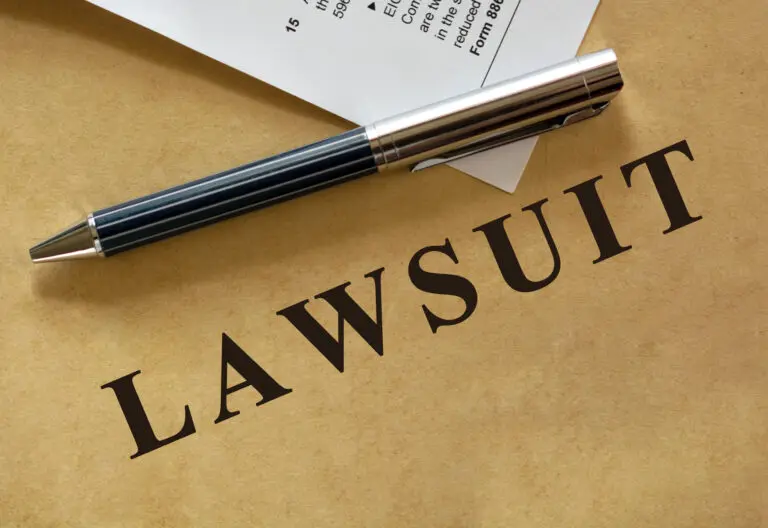Accidentes de moto can result in severe physical injuries and significant emotional trauma. In the aftermath of such an accident, calculating pain and suffering is a critical aspect of seeking fair compensation. Understanding how motorcycle accident lawyers calculate these non-economic damages is essential for accident victims aiming to achieve just compensation. This comprehensive guide delves into the methods and considerations used by lawyers to evaluate pain and suffering in motorcycle accident cases.
Understanding Pain and Suffering
Defining Pain and Suffering
Pain and suffering encompass both the physical pain and the emotional distress resulting from an injury. Physical pain includes the immediate pain from the injury itself and any long-term discomfort or disability caused by the accident. Emotional distress can involve anxiety, depression, PTSD, and other mental health issues that arise due to the trauma of the accident.
These non-economic damages are subjective and can vary greatly from one individual to another. Unlike medical bills or lost wages, there is no clear monetary value assigned to pain and suffering. This variability makes it crucial to have a knowledgeable motorcycle accident lawyer who can accurately assess and argue for appropriate compensation.
Importance of Compensation for Pain and Suffering
Compensation for dolor y sufrimiento aims to provide financial relief for the non-tangible impacts of an accident. While money cannot erase the trauma, it can help victims cover expenses related to their recovery, such as therapy, and provide some measure of justice. Proper compensation can also alleviate financial stress, allowing victims to focus on their healing and recovery.
Recognizing the importance of these damages highlights the need for a thorough and detailed approach to their calculation. Motorcycle accident lawyers play a vital role in ensuring that all aspects of pain and suffering are considered and presented effectively during negotiations or in court.
Methods of Calculating Pain and Suffering
Multiplier Method
The multiplier method is one of the most common techniques used to calculate pain and suffering. This method involves multiplying the actual damages (medical bills, lost wages) by a number typically ranging from 1.5 to 5, depending on the severity of the injury and the impact on the victim’s life.
For instance, if an accident results in $50,000 in medical expenses and lost wages, and a multiplier of 3 is deemed appropriate due to severe injuries and significant lifestyle changes, the pain and suffering compensation would be $150,000.
Factors influencing the choice of multiplier include the severity of the injuries, the duration of recovery, and the long-term impact on the victim’s life. A higher multiplier is used for more severe and debilitating injuries that result in substantial changes to the victim’s daily life and overall well-being.
Per Diem Method
The per diem method assigns a daily monetary value to the victim’s pain and suffering and multiplies it by the number of days the victim is affected. This method is often used when the duration of suffering can be clearly defined, such as in cases where recovery time is well-documented.
For example, if a daily rate of $200 is assigned and the victim experiences pain and suffering for 180 days, the total compensation would be $36,000. The daily rate is typically based on the victim’s daily earnings or a reasonable estimate of the daily impact on their quality of life.
The per diem method provides a straightforward calculation but may not always capture the full extent of the emotional and psychological toll of the accident. Therefore, it is often used in conjunction with other methods to ensure comprehensive compensation.
Factors Considered in Pain and Suffering Calculations
Severity of Injuries
The severity of injuries plays a significant role in determining the compensation for pain and suffering. Severe injuries such as traumatic brain injuries, spinal cord injuries, and severe fractures often result in higher compensation due to the long-term impact on the victim’s life. These injuries can lead to permanent disabilities, chronic pain, and significant lifestyle changes.
Documentation from medical professionals detailing the extent of the injuries and the anticipated recovery process is crucial. This includes medical reports, treatment plans, and expert testimony that can substantiate the severity and long-term effects of the injuries.
Impact on Quality of Life
The impact of the accident on the victim’s quality of life is another critical factor. This includes the ability to perform daily activities, engage in hobbies, and maintain relationships. Significant changes in lifestyle, such as being unable to work or requiring assistance with personal care, warrant higher compensation.
Victim statements, testimony from family and friends, and psychological evaluations can help illustrate the profound impact on the victim’s life. These accounts provide a comprehensive picture of how the injuries have altered the victim’s daily routine and overall well-being.
Duration of Recovery
The length of time it takes for the victim to recover fully, if at all, also affects the calculation of pain and suffering. Longer recovery times generally result in higher compensation due to prolonged pain, medical treatment, and emotional distress. Chronic pain or permanent injuries that result in ongoing suffering will significantly increase the compensation amount.
Keeping detailed records of all medical appointments, treatments, and therapy sessions is essential. These records not only document the duration of recovery but also provide evidence of the ongoing nature of the pain and suffering experienced by the victim.
Documentation and Evidence
Medical Records and Expert Testimony
Comprehensive medical records are fundamental in substantiating claims for pain and suffering. These records should include diagnoses, treatment plans, surgery details, and rehabilitation progress. Medical professionals can provide expert testimony on the severity of the injuries, the expected recovery process, and the long-term impact on the victim’s life.
Additionally, seeking second opinions or specialist consultations can strengthen the credibility of the medical evidence. Expert testimony from neurologists, orthopedic surgeons, and other specialists can provide detailed insights into the specific injuries and their implications.
Psychological Evaluations
Psychological evaluations are crucial for documenting emotional and mental health issues resulting from the accident. These evaluations can diagnose conditions such as PTSD, depression, and anxiety, providing a basis for claims related to emotional distress. Reports from psychologists or psychiatrists can describe the severity of these conditions and their impact on the victim’s daily life.
Regular therapy or counseling sessions should also be documented, as they demonstrate ongoing efforts to address the psychological impact of the accident. These records can support claims for compensation for long-term emotional distress and suffering.
Victim Impact Statements
Victim impact statements offer a personal account of the pain and suffering experienced due to the accident. These statements can describe the physical pain, emotional distress, and overall changes in the victim’s life. Written by the victim or their family members, these statements provide a human perspective that can be compelling in court or during settlement negotiations.
Including specific examples of how the injuries have affected daily activities, relationships, and overall well-being can make these statements more impactful. Detailed and heartfelt victim impact statements can significantly influence the calculation of pain and suffering compensation.
The Role of a Motorcycle Accident Lawyer
Asesoramiento jurídico especializado
A motorcycle accident lawyer provides expert legal guidance throughout the process of seeking compensation for pain and suffering. They help gather and organize evidence, negotiate with insurance companies, and represent the victim in court if necessary. Their expertise ensures that all aspects of pain and suffering are thoroughly documented and presented effectively.
Lawyers also advise on the most appropriate calculation methods for pain and suffering based on the specifics of the case. They ensure that the compensation sought is fair and reflective of the true extent of the victim’s suffering.
Negociar con las compañías de seguros
Insurance companies often attempt to minimize payouts for pain and suffering. A skilled lawyer negotiates with the insurance company to ensure that the victim receives fair compensation. They present a well-documented case that includes all relevant evidence, making it difficult for the insurance company to deny or undervalue the claim.
By handling all communications and negotiations, the lawyer protects the victim from potentially stressful interactions and focuses on securing the best possible outcome. Their experience and negotiation skills are crucial in achieving a fair settlement.
Court Representation
If a fair settlement cannot be reached through negotiation, the lawyer will represent the victim in court. They will present evidence, call expert witnesses, and make legal arguments to support the claim for pain and suffering. Effective court representation is essential for achieving a favorable outcome in cases where settlement negotiations fail.
A lawyer’s ability to articulate the impact of pain and suffering and present compelling evidence can significantly influence the court’s decision. Their courtroom experience and legal knowledge ensure that the victim’s case is presented in the strongest possible manner.
Casos prácticos y precedentes
Analyzing Previous Cases
Reviewing previous cases with similar circumstances can provide valuable insights into potential compensation amounts for pain and suffering. By analyzing past verdicts and settlements, lawyers can identify trends and factors that influenced the outcomes. This information helps in setting realistic expectations and developing effective strategies for the current case.
Case studies also highlight the importance of thorough documentation and compelling evidence in achieving favorable outcomes. Learning from past cases can guide the preparation and presentation of the current case.
Precedents in Personal Injury Law
Legal precedents in personal injury law establish guidelines for calculating pain and suffering. These precedents are based on past court rulings and provide a framework for evaluating similar cases. Lawyers use these precedents to argue for appropriate compensation and ensure that the claim aligns with established legal standards.
Understanding relevant precedents helps lawyers anticipate potential challenges and counterarguments. It also provides a basis for comparing the current case to previous ones and advocating for fair compensation based on established legal principles.
Challenges in Calculating Pain and Suffering
Subjectivity and Variability
One of the main challenges in calculating pain and suffering is the inherent subjectivity and variability. Each victim’s experience of pain and emotional distress is unique, making it difficult to establish a standardized method for calculation. Lawyers must navigate these complexities and present a compelling case that accurately reflects the victim’s suffering.
Balancing objectivity with the personal nature of pain and suffering requires a nuanced approach. Lawyers must effectively convey the human impact of the injuries while grounding their arguments in solid evidence and legal principles.
Insurance Company Tactics
Insurance companies often employ tactics to minimize payouts for pain and suffering. These tactics may include questioning the severity of injuries, disputing the victim’s account, or offering lowball settlements. Lawyers must be prepared to counter these tactics with well-documented evidence and persuasive arguments.
Staying vigilant and proactive in addressing insurance company tactics is crucial for protecting the victim’s rights. Lawyers must anticipate potential challenges and respond effectively to ensure fair compensation.
Proving Non-Economic Damages
Proving non-economic damages like pain and suffering can be challenging due to the lack of concrete evidence. Unlike economic damages, which have clear monetary values, non-economic damages are more abstract and subjective. Lawyers must rely on comprehensive documentation, expert testimony, and compelling narratives to substantiate these claims.
Establishing a clear link between the accident and the victim’s pain and suffering is essential. Lawyers must demonstrate how the injuries have directly caused emotional and physical distress, impacting the victim’s quality of life.
The Psychological Impact of Motorcycle Accidents
Trauma emocional
Motorcycle accidents can result in significant emotional trauma. Victims may experience anxiety, depression, and PTSD as a result of the accident and its aftermath. These conditions can severely impact daily functioning, relationships, and overall well-being.
Documenting emotional trauma through psychological evaluations and therapy records is crucial for substantiating claims for pain and suffering. Expert testimony from mental health professionals can provide detailed insights into the psychological impact of the accident.
Coping with Long-Term Effects
Coping with the long-term effects of a motorcycle accident can be challenging. Chronic pain, physical limitations, and emotional distress can persist for months or even years after the accident. Developing effective coping strategies and seeking ongoing support are essential for managing these long-term effects.
Support groups, counseling, and rehabilitation programs can provide valuable resources for coping with the aftermath of a motorcycle accident. Documenting participation in these programs can strengthen claims for pain and suffering by demonstrating ongoing efforts to address the impact of the accident.
Conclusión
Calculating pain and suffering in motorcycle accident cases is a complex and multifaceted process. By understanding the methods used, the factors considered, and the importance of thorough documentation, victims can ensure they receive fair compensation for their injuries. Working with a skilled motorcycle accident lawyer is essential for navigating the legal complexities and achieving a favorable outcome. Through expert legal guidance, effective negotiation, and compelling representation, victims can secure the compensation they deserve for their pain and suffering.
Abogados.Media Video Document References
- Is Personal Injury Part of Your Law Practice?
- As an Attorney, How Are You Generating Content for Your Online Presence?
- How Can You Help Potential New Clients Get Their Questions Answered?
- How Do You Differentiate Yourself When Someone Looks Online for Help?
- How Do You Differentiate Yourself as a Criminal Defense Attorney?
- Have You Been Thinking About Video Marketing for Your Law Firm?
- Should Attorneys Use Video Marketing to Attract New Clients?
- What Do Potential Clients See When They Research Your Name Online?
- Cómo puede ayudarle Attorneys.Media









